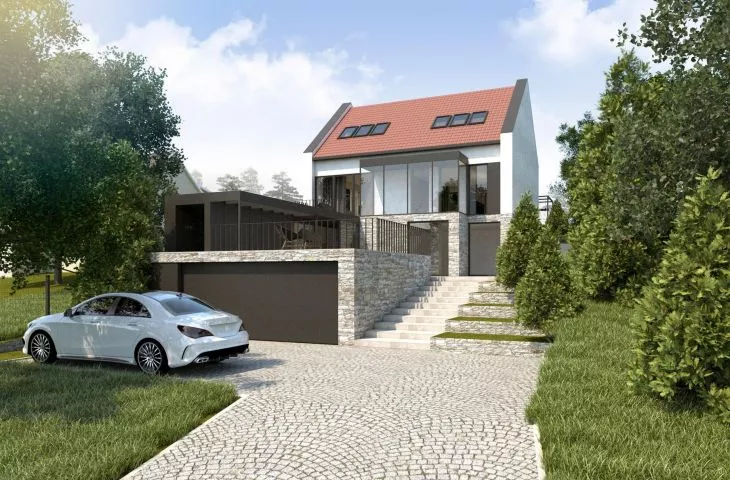More and more owners of block and other houses, nowadays not so modern, decide to remodel them. They are guided primarily by the desire to give the building a more contemporary look, but also to arrange the rooms in a functional way. Such houses do not always need many means with which to give them new life. All it takes is a good idea!
A small house standing in Krakow was built in the 1960s using the economy method. It was erected on a plan similar to a square. It consisted of a basement that served as a utility, located at ground level, a first floor that could be accessed through an enclosed staircase at the front, and an unused attic.
Redevelopment project - original assumptions
The original design for its reconstruction was to leave as many original elements as possible and, instead of replacing them, to undergo renovation. The goal of the designers from {tag:Studio} was to adapt the house to the needs of the family to live in it. The initial concept was to leave the basic structure of the building - the exterior walls, the ceiling over the basement and the roof slopes. However, the newly designed elements, whose task was to streamline the functional interior, also influenced the external shape of the house, giving it a more modern expression.
The small standing house in Krakow was built in the 1960s using the economy method
Photo: O2 Architects
Metamorphosis of an old house
The architects followed this direction - the staircase run was reversed by 180 degrees, which allowed the first floor to be opened up to the first floor section. A glazed entrance hall was designed, which connected the ground floor with the garage created by the conversion of the outbuilding. The hall leads to both the first floor area and the living area to the first floor level. In the former, a home office, a mini spa and a technical room were planned. In the second, a kitchen, dining room, a spacious common room with the possibility of a studio for the lady of the house, and a sanitary unit have been located. Two terraces will be created on this level - at the front of the house on the "green" roof of the connecting block, and at its rear - a garden terrace.
The designers decided to expand the attic to include a night zone, to which a single-run steel staircase with wooden treads will lead. Together with the exposed brick of the walls and the natural wood of the floors, they will form the basis for a Scandinavian-industrial interior design. The rooms located at the very top will be illuminated by skylights.
A glazed entrance hall connected the basement with the garage created by the conversion of the outbuilding
© O2 Architects
The immediate vicinity of the house is highly diverse, both in terms of the scale of the buildings, their style, roof shapes and the materials used, so it was difficult to find context. The designers were therefore keen to relate to the architectural tradition of the site, of which this house may be the latest example. As a result, the form of the building can be traced back to its original appearance. The combination of local materials - stone, light-colored plaster, ceramic roof tiles with contemporary solutions - large glazing and "green" terraces, will make the house contain tradition and modernity.

















































